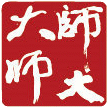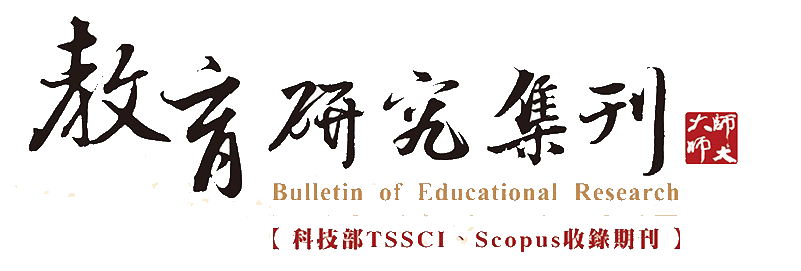| 篇名 |
資優教育品質及其影響因素探討
更多文章
|
|---|---|
| 並列篇名 | A STUDY ON THE QUALITY OF GIFTED EDUCATION |
| 作者 | 秦汝炎 |
| 中文摘要 | 本研究係以問卷調查法探討資優教育的品質及其影響因素。樣本取自於台北市辦理資優教育的國中六所、小學五所。受試對象包括學校行政人員45名,資優班教師84名,普通班教師56名,國中二年級資優生139名,普通生557名,國小五年級資優生129名,普通生488名。本研究由教育投入、教育歷程,及教育結果三個層面探討資優班與普通班間、各校資優教學間的差異。研究工具有四種:為教學品質問卷(教師部份及學生部份)、資優教學現況調查表(行政人員部份及教師部份)、家庭生活問卷及學科成就測驗。資料處理係以二因子變異數分析比較各校間教學現況、學科成就、及家庭學習環境之差異並以百分比統計調查各校發展資優教育的有利因素及不利因素。結果發現:\r1. 國中資優生在教育歷程因素中之「師生互動」、「教學態度」、「教材教法」、「學習態度與方法」,及「學生互動」得分均高於普通班學生;在教育結果因素中之「能力發展」、「社會態度」、「行為表現」,及各科學業成就均優於普通班學生,而資優生之家庭學習環境亦優於普通生之家庭學習環境,因此國中資優班之教育品質優於普通班級。\r2. 國小資優生在教育歷程因素中之「師生互動」、「教學態度」、「教材教法」及「學生互動」得分均低於普通班學生;而在教育結果因素中之「社會態度」及各科學習成就優於普通班學生;兩組學生之家庭學習環境沒有差異。\r3. 資優班教師進修情形較普通班教師為多,而其「教學態度」及「教材教法」均優於普通班教師。但不同教學年資及進修程度的教師,其「教學態度」及「教材教法」沒有差異。\r4. 各校資優班教學時間以正課為主,課程時間為輔;教學模式以充實制為主,加速制為輔;教學方式團體教學及個別化教學並重;課程內容以部頒課程及補充教材為主。\r5. 各校無論是在教育投入、教育歷程、或是在教育結果之各個因素中得分均有差異。在國中A校、C校顯示有較為合乎理想的教育品質;在國小K校、J校亦有較高的教育品質。其他各校則在各個層面表現不一致的傾向。然教育投入中的學生素質及家庭學習環境因素似與教育歷程及結果的品質有關。\r6. 資優教育推展的有利因素主要為教師及學生素質優秀、課程富有彈性、且家長能與學校密切配合;不利因素主要為升學壓力過重,教育缺乏銜接體制,教學方式及內容因受家長態度的影響或有不如理想之處,同時學生主動學習的精神若不夠,也將影響資優教育的成效。研究者建議:1.資優教育功能應獲肯定,以積極培養優秀人才。2. 資優教育應建立銜接的體制,有計劃地加以推展及實施。3. 各校應發展適合學校條件及特質的教學模式,以提昇教育的品質。4. 教師應培養學生主動學習的精神,提供學生自我引導的機會。5. 教育當局當獎勵優良教師,鼓勵教材的編輯及教學研究的實施。6. 各校應組成資優教學研究小組,加強教師教學研討,以增進教學經驗,提昇教師素質。 |
| 英文摘要 | The purposes of this study were to assess the quality of gifted education and to look into the factors which influence its effectiveness. The subjects were recruited from six junior high schools and five elementary schools engaged in gifted education in Taipei. There were 45 school administers, 84 teachers of gifted students, 56 teachers of non─gifted students, 139 8th grade gifted students, 557 8th grade non─gifted students, 129 5th grade gifted students, and 488 5th grade non─gifted students in the sample. The researcher used three questionnaires and two tests to compare the differences between gifted and non─gifted group and the differences among every schools from the views of educational input, educational process, and educational outcomes. The three questionnaires are (1) The Schooling Quality Questionnaire(Teacher’s Part and Student’s Part)(2) Survey on Gifted Education(Administer’s Part and Teacher’s Part)(3)The Family Life Questionnaire. The two tests are :(1) achievement tests for the 8th grade students(include Mathematics, Physics and Chemistry)and(2)achievement tests for the 5th grade students(include Mathematics and Science). One way, two way ANOVA and percentage were used to analyze the results. The major findings were as follows:\r1. The quality of education is better in the 8th grade gifted classes than in the 8th grade non─gifted classes, whilever it was assessed from the dimension of educational input, process, or outcomes.2. The 5th grade gifted classes showed lower quality than non─gifted classes in educational process, but higher achievement than the latter.3. The teachers of gifted students reported better teaching attitudes and teaching methods than the teachers of non─gifted students. They also attended more professional training. But teachers of different teaching ages and educational degrees didn’t show any significant differences in teaching attitudes and teaching methods.4. Some schools showed higher educational quality in every dimensions, but some schools showed inconsistent results among those ones. The quality of gifted education in each school was quite different from the others.5. The factors most favorable to gifted education are good teachers, good students, and flexible curriculum design. While the factors most unfavorable to gifted education are high stress of The Entrance Examination, fixed educational system, academic oriented attitude of parents, and passive learning attitude of students. |
| 起訖頁 | 151-200 |
| 刊名 | 教育研究集刊 |
| 期數 | 198806 (30期) |
| 出版單位 | 國立臺灣師範大學教育學系 |
| 該期刊-上一篇 | 國民教育法令泛論 |
| 該期刊-下一篇 | 邁向成功的課程實施 |








